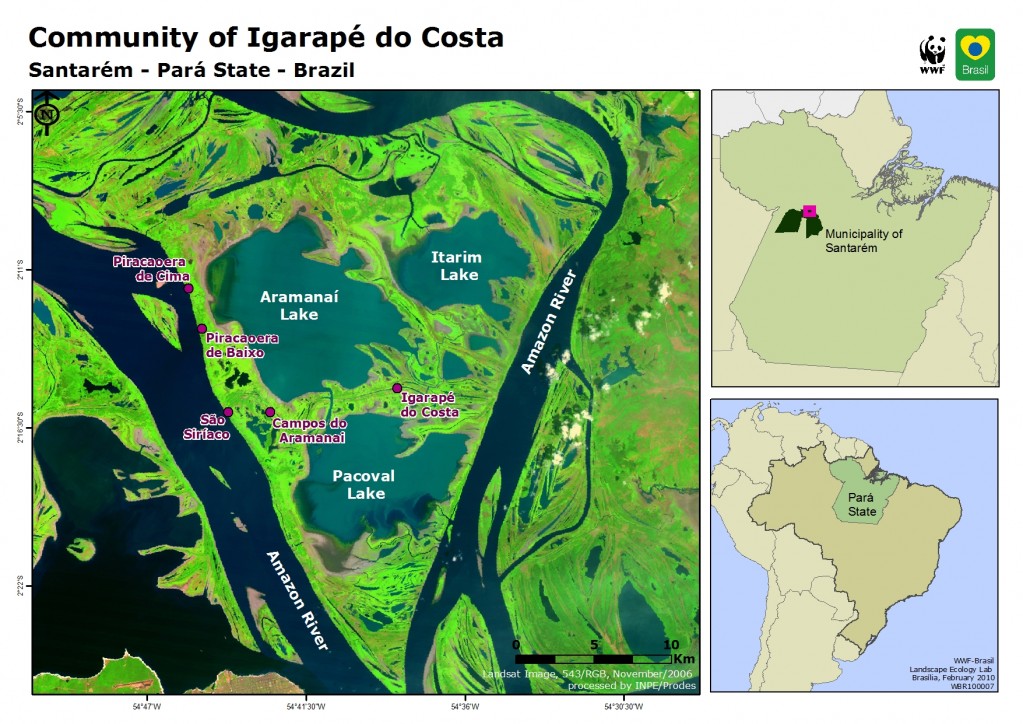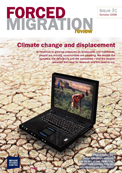Posted by Kayly Ober on July 12th, 2010 | 
(Reuters) July 12, 2010 – Rising seas from global warming, coming after years of coral reef destruction, are forcing thousands of indigenous Panamanians to leave their ancestral homes on low-lying Caribbean islands.
Seasonal winds, storms and high tides combine to submerge the tiny islands, crowded with huts of yellow cane and faded palm fronds, leaving them ankle-deep in emerald water for days on end.
Pablo Preciado, leader of the island of Carti Sugdub, remembers that in his childhood floods were rare, brief and barely wetted his toes. “Now it’s something else. It’s serious,” he said.
The increase of a few inches in flood depth is consistent with a global sea level rise over Preciado’s 64 years of life and has been made worse by coral mining by the islanders that reduced a buffer against the waves.
Carti Sugdub is one of a handful of islands in an archipelago off Panama’s northeastern coast, where the government says climate change threatens the livelihood of nearly half of the 32,000 semi-autonomous Kuna people.
The 2,000 inhabitants of Carti Sugdub plan to move to coastal areas within the Kuna’s autonomous territory on the Panama mainland. They are eyeing foothills a half-hour walk from the swampy beach areas.
“The water level is rising. The move is imminent,” said Preciado, who has been leading a group of villagers clearing tropical forest for the new settlement.
Continue reading this post »
Posted by Kayly Ober on July 7th, 2010 | 
The Government of the Republic of the Marshall Islands has approached Columbia Law School’s Center for Climate Change
Law to explore creative approaches to the legal issues facing these nations. Among the legal questions that need to be explored are the implications of the loss of inhabitable physical territory for statehood, for maritime governance, for property, fishing and mineral rights, and for the legal status of displaced persons. International law, human rights law, environmental law, and admiralty law are just a few of the fields that may be implicated. If you’d like to learn more, visit Columbia Law School’s website here.
If you are interested, please e-mail abstracts of 300 words or less to Michael Gerrard, Director of the Center for Climate Change Law, at michael.gerrard@law.columbia.edu by September 1, 2010.
Michael B. Gerrard
Andrew Sabin Professor of Professional Practice
Director, Center for Climate Change Law
Columbia Law School
435 West 116th Street
New York, New York 10027
Tel: 212-854-3287
Fax: 212-854-7946
michael.gerrard@law.columbia.edu
Posted by Kayly Ober on July 2nd, 2010 | 
The German Marshall Fund of the United States (GMF) has released eight background papers that investigate climate-induced migration. These background papers are a product of GMF’s Transatlantic Study Team on Climate-induced Migration (led by Dr. Susan E. Martin, Georgetown University, and Dr. Koko Warner, UN University). The Study Team consists of scholars, policymakers, and practitioners from the migration and environmental communities. You can find links to the papers below.
Developing Adequate Humanitarian Responses by Sarah Collinson
Summary: Diverse and dynamic patterns of internal and cross-border mobility, migration and displacement are the norm in most countries affected by chronic or recurrent humanitarian crises, which often makes it difficult to distinguish between forced and voluntary migrants because different people adopt highly varied strategies to cope or survive, or to respond to new opportunities. The most negative human impacts of climate change will be reflected in sudden and large-scale forced migration.
Many so-called “fragile states” already fail to provide adequate social protection to poor and vulnerable populations, so any climate-related deterioration in human security has the potential to generate extreme welfare needs that are far beyond the capacities or willingness of these states to address. The sheer scale and complexities of displacement will continue to stretch and challenge the normative, institutional and operational frameworks and capacities of the international humanitarian system and national humanitarian actors. Greater priority needs to be given to flexible humanitarian funding and programming suited to addressing chronic as well as acute humanitarian needs and vulnerability in countries where formal climate change adaptation policies are unlikely to be developed. Superficial climate change adaptation and disaster risk reduction efforts in countries affected by complex and interacting processes including population growth, economic stagnation, conflict, urbanization and environmental stress, are unlikely to influence the deeper dynamics of vulnerability associated with distress migration.
Continue reading this post »
Posted by Kayly Ober on June 22nd, 2010 | 
 Location of the community of Igarape do Costa. Photo credit: WWF-Brazil The World Wildlife Fund established the Climate Prep blog to “define climate change adaptation through illustrations of on the ground adaptation projects and scientific adaptation studies, explorations of adaptation concepts, and tracking firsthand the progress of adaptation in the international policy arena.”
This is especially pertinent to the field of climate change-induced migration, as the more preventative measures are taken the
less impact climate change should have on migration. A great illustration of the climate’s impact on migration can already be seen in Brazil, where the recent blog post “Building Climate Adaptation Capacity in Amazon Floodplain Communities” claims “many people are migrating in the Santarém region from lake to lake in search of fish.” The post from Climate Prep is cross-posted below.
(Climate Prep) February 12, 2010 – Located in the lower Amazon floodplain of Brazil, the Santarém region harbors important fisheries that many people depend on for employment, food security, government tax revenues, and items to export to both domestic and foreign markets. Climate change is creating difficulties, but not without hope and new opportunities as well.
These fisheries and the services that they provide are known to
be sensitive to shifts in the climate. Precipitation patterns are shifting in the Santarém region, with the amount of annual rainfall generally decreasing and floods and droughts becoming more common. Livelihoods for most people around these lakes combine farming and fishing, both of which will be negatively affected by a reduction in rainfall. Less rain will have an especially big impact on the local economy through the quantity of fish that are locally harvested. If regional climate forecasts are accurate, rural livelihoods in lakeshore regions will become increasingly precarious over time.
Because of these shifts in climate, many people are migrating in the Santarém region from lake to lake in search of fish. And more people are even moving from rural regions to cities and other areas of greater economic opportunity. The rate people leave their traditional homes will probably increase as rainfall becomes increasingly variable.
Continue reading this post »
Posted by Kayly Ober on June 21st, 2010 | 
Clark L. Gray, a geographer and postdoctoral researcher at Duke University, has been adding to the sorely needed field of evidence-based research on environment and migration, with emphases on Ecuador and Indonesia, since 2008. His dissertation, “Out-Migration and Rural Livelihoods in the Southern Ecuadorian Andes,” a winner of the Nystrom Dissertation Award, was the first of his many
writings on environmental migration and Ecuador. He also presented a paper with Richard Bilsborrow on “Environmental Influences on Migration in Ecuador” at 2010’s Annual Meeting of the Population Association of America. He wrote a shorter piece for the Population Reference Bureau in January 2010 on migration in Ecuador and Indonesia entitled “Environmental Refugees or Economic Migrants?.” You can find it in its entirety after the jump.
Continue reading this post »
Posted by Dan DaSilva on June 20th, 2010 | 
Today is World Refugee Day around the globe. This annual commemoration is marked by a variety of events in more than 100 countries, involving government officials, humanitarian aid workers, celebrities, civilians and the forcibly displaced themselves. It is a big opportunity for such UN Agencies like the High Commissioner for Refugees (UNHCR) and individual organizations alike, to create awareness about refugees and other displaced people. An website to check out is World Refugee Day Live which features
streaming events from around the world. This year, UNHCR is setting up a live video link to talk to refugees in Kuala Lumpur and Damascus
about their experiences as urban refugees.
This year’s theme is “Home” in recognition of the plight of more than 40 million uprooted people around the world, many of those who leave their homes due to the increasing effects of climate change. Below is the promotional video for World Refugee Day 2010, featuring UNHCR Goodwill Ambassador Angelina Jolie.
.
|
|




